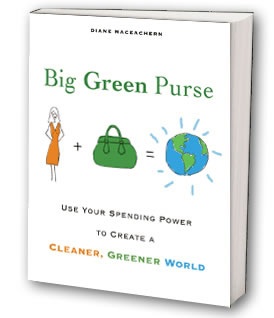More Green Savings – “Stickers” for Kids!
There are certain things that I just HATE spending money on. Chief among them are stickers for kids. Have you ever noticed how expensive they are? Think about it- those stickers must cost just pennies to make, and they’re sold for $1.50 to $2.00 or more for a pack of 20 or so stickers. Plus, there’s the packaging issue – they’re shrink wrapped in plastic, which is environmentally harmful.
This tip came to me purely by accident. My five-year-old, a budding naturalist, admired the American Kestrel stamps at the post office. When I told him he could get ONE HUNDRED of them for just $1, he was sold. (Of course, it helps that he has to spend his allowance money on stickers!)
What’s the difference between North American Kestrel stamps and commercial stickers? Nothing except several dollars (on just one purchase) and less packaging waste!
Works for me! And I hope it works for all those Moms participating in Crunchy Chicken’s Buy Nothing Challenge – like my bloggy friends MamaBird and Gray Matters. Those women committed to buying absolutely nothing for a month – I knew I couldn’t do it this month, so I didn’t want to disappoint by signing up! Anyway, here’s hoping they have some nice stamps they can pass off to their kids as new “stickers!”
And speaking of Gray Matters, she has a great tip posted about a recycling program through the US Mail. Go check it out here!
Filed under Eco-friendly gifts, Green Ideas & Stuff, Savings Tips | Wordpress Comments (4) |More of the Big Green Purse Interview (Part 2)
Following is Part 2 of OrganicMania’s interview with Diane MacEachern, author of the new eco-best seller Big Green Purse. Part 1 is here.
Big Green Purse aims to inspire women to use their collective purchasing power to “create a cleaner, greener world.” Did you realize that simply by buying more green products, we encourage business to produce more green products? And of course, it’s not all about buying…it’s about reducing, reusing and recycling too.
OrganicMania: In the book, you provide an overview of many of the third party seals and certifications available for green and organic products. It can really be overwhelming. People are just getting used to the USDA Organic seal, and now they’re being asked to learn about the Green Seal, the VeriFlora label, Certified Humane Raised & Handled, the SMaRT Sustainable Standard, and at least nine other seals. On top of that, they need to sort out all the bogus “natural” and “organic” claims. Do you think there is true value in having so many seals?
Diane MacEachern: I do think it’s best defined, so that it’s not brand specific, but product specific. With regard to organics, companies are forbidden by law to claim they’re organic if they’re not. But there is a loophole. For example, they can say on their label that they have used organic lime juice or organic lemons and they can get away with implying that the product is organic. There is a very strict rule about how much of the product has to actually be organic in order to use the USDA Organic seal. But companies can include organic ingredients in their products and imply that the entire product is organic. The consumer may think the product is truly organic, but if it doesn’t have that seal, it’s not organic. This is one of those things that is so annoying and that undermines organic credibility in the marketplace.
(Editor’s Note: For an example of one of these “implied organic products, read this post.)
The best organic products have the Fair Trade seal and the Organic seal. And with coffee, chances are that if you see both these seals, it’s likely shade grown as well.
OrganicMania: Let’s talk about the role of environmental contaminants and health, particularly the impact of chemical ingredients in common household products and personal care products. You write about that extensively. Do you think that the US government will ever change the way it regulates chemicals, from looking at each ingredient separately, as it does now, to looking at interactions between various chemicals? I imagine it would be very complex to do.
Diane MacEachern: None of the presidential candidates are talking about human health impacts of the environment. It’s going to be tough. I think the best thing to do for now is to choose products with the fewest number of ingredients. That gives you a greater chance that you’ll be protected.
OrganicMania: This makes me think of the Precautionary Principle you discuss at length in your book. It’s something that I think a lot of us mothers believe intuitively, but may have no idea that there is literally something called the Precautionary Principle. Can you explain the Precautionary Principle?
Diane MacEachern: The Precautionary Principle was hammered out in 1998 by a conference of scientists, researchers, and citizens. They were concerned that industry was using the lack of absolute scientific evidence as a cover to produce products suspected of having serious health and environmental consequences.
The principle is grounded in the belief that we should not wait to protect ourselves or the planet until we’re absolutely positive, from a scientific point of view, that certain products or activities – think dioxin, the burning of fossil fuels, or even cigarettes – can indeed do damage.
The principle declares, “When an activity raises threats of harm to human health or the environment, precautionary measures should be taken, even if some cause-and-effect relationships are not fully established scientifically.”
OrganicMania: Thanks so much, Diane. It’s been great hearing your thoughts and getting more insight into your terrific book. And it’s so exciting to see so many women coming together to work on issues surrounding the environment and our health.
Diane MacEachern: Yes, it is exciting. Mary Hunt, the author of “In Women We Trust,” talks about how women are grouping to save the world. Women are using blogs to carve our thoughts into the Internet wall. ‘I was here and this is what I think.’
Copyright 2008 OrganicMania
Filed under Green Ideas & Stuff, Interviews, Organic Mommypreneurs, Organics | Wordpress Comments (5) |Interview with Big Green Purse Author Diane MacEachern
If you’re anything like me, your list of “must read” books is longer than your list of “recently read” books! Prior to interviewing Diane MacEachern, author of the new eco-handbook Big Green Purse, I admitted that I might not make it through the entire book prior to speaking with her.
As the author confessed to OrganicMania, “None of us have any time! It’s hard to concentrate and read. The book is intentionally designed so that if don’t need to read the whole book, you can just check out the sections of interest to you.”
Imagine my surprise when a week or so later I had read a great deal of the book, which aims to inspire women to use their collective purchasing power to “create a cleaner, greener world.” Easy-to-read, informative, I could go on and on…but check out this review from EnviroMom.
Following is Part I of OrganicMania’s interview with Diane MacEachern. Check here for Part II.
OrganicMania: Some pundits dismiss women’s interest in the environment as just a passing fad. You’ve been writing about the environment for nearly 30 years now, so you’ve seen interest come and go. Do you think this latest upsurge in interest is a reflective of a real change in people’s priorities, or just the latest cool trend?
Diane MacEachern: I’m very optimistic. We suddenly realize how serious these environmental problems are. I don’t think this is just a trend because we are becoming so educated about the relationship between the environment and human health. It’s not just buying cool organic tee shirts, but it’s women recognizing that they need to buy products without phthalates so that my unborn baby has a healthy life and deodorant without parabens so I don’t get breast cancer. And this only will get stronger as more and more research goes down this path.
Another big issue is air pollution. Women suffer more heart attacks than men because our blood vessels are smaller. We’re more severely impacted by poor air quality. Our children are also suffering from more cases of asthmas because of environmental issues. The only way that will change is to protect the environment, or else we’ll have more heart attacks, more asthma, and more health consequences to every environmental problem that we’re looking at.
OrganicMania: There’s also a perception that this rising green consciousness is a very upper-middle-class phenomenon. There was a lot of sniping about that in the blog chatter about The New York Times article on Eco-moms. I was pleased to see your book included money saving tips, making it seem very accessible, like it was written for Everywoman. Do you see women from all walks of life embracing the green movement? Do you think this is a real shift that will embrace all women?
Diane MacEachern: I’ve been to a lot of bookstores for book readings, and my observation is that there are definitely people there who are interested in this topic who come from all economic levels. There are a lot of upper middle class women who will ask indignantly, “Isn’t this just for wealthy women?” I have two responses to that.
Everybody can do something. You can turn off your lights. Everybody can afford 99 cents for a reusable shopping bag. Anyone can shop at thrift stores. It’s fabulous. We need to dismiss this notion that eco-consciousness is only for wealthy people. Environmental degradation doesn’t affect only wealthy people.
But those who are wealthy do have a responsibility to be to be leaders and early adopters to protect the environment. They can ultimately help to drive down price if they buy these green products until supply and demand really kicks in, and prices decrease. I remember when I bought my first compact fluorescent bulb. It was $25. Today you can buy them for $1.99. I’m proud to be an early adopter, a woman who uses money to make a difference. That’s a really important part of the book.
OrganicMania: Big Green Purse talks quite a bit about the connection between phthalates and early onset puberty, but you don’t write about a possible connection between early onset puberty and hormones in milk. Many people use that possible link as a reason for buying organic milk. Do you disbelieve that?
Diane MacEachern: I didn’t have time to do all the research into the consequences of hormones and milk. I’m going to put that information on the Big Green Purse website, along with information about hormones in meat. The website will constantly refresh the book.
Go here to read Part II of this interview.
Copyright 2008 OrganicMania
Filed under Green Ideas & Stuff, Interviews, Organic Mommypreneurs, Organics, Pregnancy | Wordpress Comments (3) |Friday Savings Tip: Organic Coupons
Remember the coupons that Mom clipped? They still come in the Sunday paper, but typically they’re for unhealthy processed foods and toxic cleaning products. Finding savings on green and organic products can be a challenge, which is why OrganicMania is posting about savings on Fridays, before most of us head out to do our weekend grocery shopping.
Do you know about Mambo Sprouts coupons? Through these coupon books, you can grab savings of 50 cents to $1.00 off popular organic items including Organic Valley milk, Ian’s™, Kashi™ cereal, Oregon chai, BACK to NATURE granola, and more.
They’re available in most organic grocery stores, but unfortunately some stock them at the check-out register. This makes no sense! You’ve already done your shopping by that point! If you’d like to plan your shopping trip before you reach the check-out, you can find the organic coupons online here.
Happy Shopping!
Lynn
Copyright 2008 OrganicMania
Filed under Coupons, Food, Green Ideas & Stuff, Organic Prices, Organics, Savings Tips | Wordpress Comments (5) |Green Savings Tip for School Lunch
When it comes to school lunches, finding healthy, organic foods that won’t break the bank and that are packaged sustainably can be quite a chore.
Juice packs are all the rage with kids. But did you ever look at the pile of juice boxes and plastic straws left over after lunch? What a waste of packaging and natural resources! Not to mention the expense of those little boxes! They’re certainly not cheap.
It’s not a good idea to save money by compromising on non-organic juice, particularly if it’s apple juice your child is drinking. Apples are heavily laden with pesticides, and childrens’ bodies are very sensitive to the chemical load of pesticides.
What to do? You can save money and reduce waste by purchasing a large container of organic apple juice and a re-usable juice box or thermos. Plus, you can dilute the apple juice with water to make it an even healthier treat for your child. Diluting with water also makes that large bottle last longer, making it less expensive. Works for me!
And just to make it even easier for you….here’s a link to a printable coupon for 75 cents off a large bottle of Santa Cruz organic juice. If there’s a Whole Foods near you, check out their house brand of 365 Organics – they’re considerably cheaper than the name brands, although with this Santa Cruz coupon, you’ll need to compare prices at your local store.
— Lynn
Copyright OrganicMania 2008
Filed under Food, Green Ideas & Stuff, Organic Prices, Organics vs. Conventional Foods, Parenting, Product Recommendations, School lunches, Sustainable Packaging, Tips, Where to Buy Organics | Wordpress Comments (7) |McDonalds on Eco-Friendly Happy Meals
Every parent knows that being stuck on the road with a hungry kid is a dilemma. It’s so hard to find healthy fare on the road that even some Green Eco-Moms find themselves in McDonalds. More importantly, most American kids eat at McDonalds. Think of the huge environmental impact McDonalds could make by greening the Happy Meal and replacing the Cheap Plastic Crap Happy Meal toys with an eco-friendly alternative toy!
The Wall Street Journal recently published a report about McDonalds Corporate Sustainability Blog. I wasn’t familiar with McDonalds environmental initiatives, so I checked out their blog, and left a comment suggesting McDonalds could do even more for the environment by introducing organic Happy Meal selections and eco-friendly Happy Meal toys.
Take a look at McDonalds response via this link. And let me know what you think by leaving a comment below!
And by the way, their response came 13 days after I left the comment! (The date doesn’t show up on their blog, but I have it via email).
— Lynn
Copyright 2008 OrganicMania
Filed under Cheap Plastic Crap, Eco-friendly toys, Food, Green Ideas & Stuff, Marketing, Organic Product Needs, Organic Restaurants, Parenting | Wordpress Comments (6) |Easy Green Weekend Project #2: Earth Hour
Looking for something fun, easy and green to do this weekend? Do you ever ask yourself how you can make a difference with one small action? Here’s an idea: Why not turn out the lights for an hour and join in on “Earth Hour?”
[youtube]http://www.youtube.com/watch?v=9_c5K7Jdw9E[/youtube]
Launched just a year ago in Sydney, Earth Hour is now a global movement to show just how much energy can be reduced in one hour.
Join in on Saturday evening at 8 p.m. local time.
Fun, Easy and Green. And Making a Difference!
— Lynn
Filed under Easy Green Weekend Projects, Green Ideas & Stuff | Wordpress Comment (0) |And The Best Way to Raise a Healthy Eater…
A while back I blogged about “10 Tips for Raising Healthy Eaters — Even Away From Home.” Much to my chagrin, it occurred to me later that I had actually forgotten the most important tip.
Involve your kids in cooking. Teach them to cook. Or if that’s not your forte, sign them up for cooking lessons.
The sooner kids learn that food is a creative process – that it’s something you make, not something you get from a box – the sooner they’ll start to really appreciate food. This means they’ll naturally gravitate towards real, healthy food, as opposed to processed foods. (And yes, there’s plenty of processed organic food nowadays too!)
Have you taught your kids to cook? I can’t wait till they can do all the cooking! Works for me!
— Lynn
Copyright 2008 OrganicMania
Filed under Food, Green Ideas & Stuff, Parenting, Tips | Wordpress Comments (2) |5 Ways to Go Retro For an Eco-Friendly “Green” Easter
Perhaps the easiest way to think about how to “go green” for Easter is to think back on how you celebrated as a child. Did you have zillions of plastic eggs and small trinkets made of Cheap Plastic Crap stuffed in your basket? It’s doubtful. Easter used to be a simple affair. A basket full of jelly beans and chocolate, and some colored (real) eggs was all it took to send a child into spasms of joy at the Easter Bunny’s bounty.
So why do we think kids have changed? Simply because the retailers now encourage us to buy Cheap Plastic Crap trinkets and plastic eggs for Easter? Think again. Try to remember how you celebrated as a child and what made you especially happy. Why not take your cues from that experience to continue your family traditions?
Here’s what works for me.
Say Yes To:
1. Real eggs. Who needs plastic? Dye some eggs and scatter them around the yard for an old fashioned Easter Egg hunt. Granted, you may not want to eat those eggs that have been sitting out in the yard, but just keep some dyed Easter Eggs in reserve in the fridge to enjoy later.
2. Paper or straw baskets. Remember basket weaving? Who needs to buy plastic baskets? You can either re-purpose some straw baskets you probably have lying around the house already or pick some up at a thrift shop. Or simply make your own baskets. Here are some instructions on how to do this.
3. Thrift shop favors. Dying to dress up your house more? Looking for some crazy decorations? Check out your local thrift shops or even antique shops. Odds are you’ll find beautiful old Easter decorations at a fraction of the price of new favors.
4. Organic, fair trade or “natural” chocolates. Okay, this one may not be so retro. We all inhaled hydrogenated oils back in the day. But now there are other, healthier options. If you can’t find or afford fair trade or organic chocolates, look carefully at the labels. I blogged here about a nice little “Made in Vermont” bunny that has all natural ingredients.
5. “Paper” grass. Try shredding some construction paper, gift paper or even comics to make the grass instead of buying plastic grass. (And if you already have the fake plastic grass, just save it and re-use for future Easters!)
Happy Easter!
Do you have any other tips? Leave a comment and share!
— Lynn
Copyright 2008 OrganicMania
Filed under Cheap Plastic Crap, Green Ideas & Stuff, Holidays, Parenting | Wordpress Comments (14) |A Community Goes Green – Watch Bethesda Green
Green initiatives are popping up all around the world, as people try to do something meaningful to slow global warming, reverse pollution, and make the environment cleaner and safer for generations to come. You’ve seen it with the Eco-Moms, Portland’s Green Groups, and now, the kick-off of Bethesda Green, an ambitious project to make Bethesda, Maryland a model green community.
In what may be the first effort of this type, business, government, community, and non-profit leaders are coming together to develop programs that will reduce Bethesda’s carbon footprint, increase its recycling rate, and reduce landfill waste and pollution. And this is just the first phase of the project! In the second phase, Bethesda Green aims to encourage smart growth and green development and to green its business community.
Championed by a local business leader and a county councilman, Bethesda Green is being defined by its community members. Expectations were that 75 people would show up for the kick-off, but nearly 400 folks arrived – from retirees to students to Moms to business owners to community and civic leaders.
This is such a new concept that no one is sure exactly how things will unfold, but the goal is to make Bethesda a model green community.
Thinking about a similar green initiative in your community? Here are six tips to help you get started:
1. Don’t mandate – encourage.
2. Find like-minded leaders in your community and form a small steering committee to help set things in motion.
3. Be open-minded. Everyone has a stake in this. This means business and government and non-profits and students and private citizens.
4. Get some help from professional organizers, at least for the initial phases. Bethesda contracted with the Livability Project* and the Sustainable Business Network of Washington.
5. Make it fun. Plan interesting events to educate and entertain.
6. Put as much on the web as you can. Identify best web practices to facilitate cooperation and communication.
Resources:
Bethesda Green Website (Soon to be relaunched)
Bethesda Green Blog (Soon to be relaunched)
Local media coverage – Washington Business Journal, Bethesda Gazette, more Gazette coverage
Launch Kick-off Remarks by Seth Goldman of Honest Tea, the visionary behind Bethesda Green
Have you been involved in similar initiatives? What do you think about Bethesda Green? Leave a comment and share! Continue reading »
Filed under Green Ideas & Stuff, Tips | Wordpress Comments (7) |



 My StumbleUpon Page
My StumbleUpon Page



